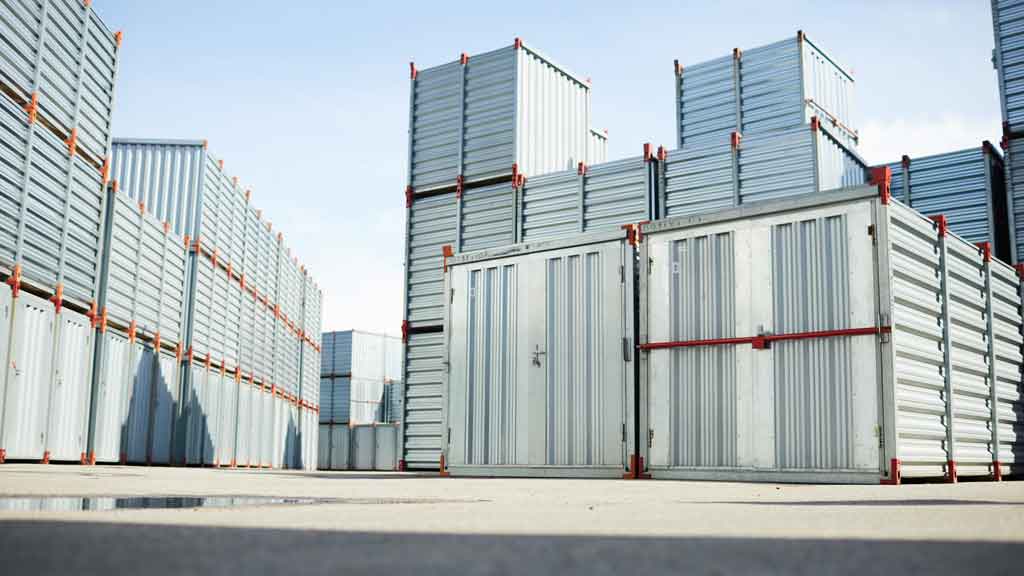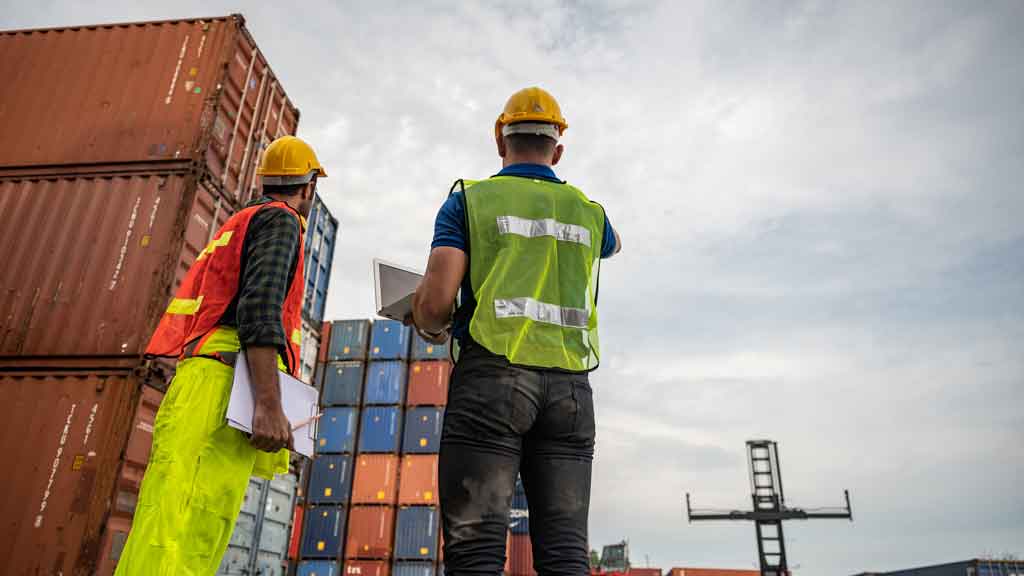Moving your home or business with a container moving long distance can be simple if you prepare in advance. While the thought of using a moving container may seem overwhelming initially, it’s just like any other move—with a few special considerations.
Taking the time to plan and ensure that everything is in order will ensure that your move goes smoothly from start to finish. Here are our top tips for making sure that happens.
Research and Plan
Before starting to pack your container moving long distance, it’s essential to research and plan your move. Here are a few things to keep in mind:
- Choose the right size container. If you’re moving across the country, you’ll want a 20-foot or 40-foot container that can hold all worldly possessions. If driving around town, consider renting a 10-foot or 15-foot container to keep costs down. This will reduce the time needed for loading and unloading; however, if there is not enough space in your driveway or yard for such a large unit (or if parking would be difficult), then consider using multiple 10/15 foot units instead. Just make sure there is enough space around each one.
- Make sure you have enough container moving long distances(and enough room) before hiring movers or renting them yourself–some people hire companies who provide this service while others purchase their equipment (such as dollies). Either way, having too many containers moving long distances is much more complicated than needed, and having too many is just wasteful waste!
- Be sure there is a room where they can unload so they don’t block access into any buildings nearby – especially garages where vehicles may need access later on, and ensure that no pedestrians cross paths with these trucks either since accidents happen all too often during these busy times when everyone wants.
Choose Intermodal Container Shipping
Intermodal container shipping is an excellent option for container moving long distance. Intermodal containers are more cost-effective than using multiple trucks. They’re easy to pack and unpack, more environmentally friendly, and safer to transport long distances.
You can also ship your belongings overseas using intermodal containers; their portability makes them easy to transport internationally.

Intermodal shipping is also a good option if you want to move quickly without paying extra fees for rush delivery or expedited shipping services. An intermodal container typically takes between 3-5 days to arrive at its destination.
Size of Container for Your Move
When picking the correct container for your move, you need to consider both the size of your move budget. In general, it’s best to choose a big container for your needs but not so big that you’ll have leftover space.
The most common sizes of long-distance moving containers are:
- 20 ft (6 m) – Generally used when moving a single-bedroom apartment
- 40 ft (12 m) – Commonly used when moving a two-bedroom apartment or three-bedroom house
If you’re planning on moving one or more bedrooms worth of belongings, we recommend using an Intermodal Container. These are large, heavy-duty steel boxes built specifically for professional movers who plan to use them in multiple moves over time. They come in three main sizes: 20′, 40′, and 53′ (6m x 12m x 13m).
Why Hire Movers When Relocating Your Business?
Discover how your business can move, generate profits, and relocate simultaneously by hiring our professional moving services. Schedule a free consultation with us, and we’ll help you get started.
Figure Out How Many Containers You Need
You may be surprised to learn that the number of containers you need isn’t always as straightforward as one might think. And indeed, if you’ve never packed up your whole life before, it can be challenging to know in advance how many container moving long distance you’ll need for a move. The most important question is this: How much stuff do I have?
Now that might sound obvious at first glance, but there are a few things we need to consider here:
- How big or small is your home? If it’s large, you likely have more storage space than those living in small apartments or condos—and thus less stuff overall. But on the flip side, some of us live in tiny homes where every square inch counts, and we don’t have any extra space available for storing different items during our relocation process (especially if roommates are involved).
- How many rooms are in your current residence? For example, if there’s only one bedroom and one bathroom in your house. Then obviously, those areas will require more boxes than, say, an extra room used primarily as an office space, therefore affecting how many total pieces of furniture/items you must pack up before leaving town.

And finally, how many people will be moving at once? If just one person lives in your home, they obviously won’t need as many boxes as a family of four would require.
If you’re moving by yourself, you probably don’t need as many boxes as someone with a family of four relocating with them.
Container Safely and Efficiently
When you are ready to load your stuff into the container, make sure that you place heavy items on the bottom and lighter items on top. This will help ensure that all your belongings arrive safely and in one piece.
Packaging materials like blankets or bubble wrap are also essential to fill in any empty spaces. Make sure everything is well packed, so there’s no room for movement during transport.

The best way to do this is by using a liberal amount of packing materials to fill in any gaps around each item and between each layer of boxes/bins (the more secure they are packed, the better).
If possible, try taping down all flaps with packing tape or another type of adhesive product before closing the container door (unless otherwise instructed by the moving company).
If you have any delicate items that are incredibly fragile, it may be a good idea to place them on top of heavier boxes so they won’t get crushed. You can also use packing materials like bubble wrap or blankets to fill in any gaps around each item and between each layer of boxes/bins (the more secure they are packed, the better).
If possible, try taping down all flaps with packing tape or another type of adhesive product before closing the container door (unless otherwise instructed by the moving company).
Use Your Lock to Secure the Container
The most important thing to remember when using your lock is that it must not be easily broken or cut. On top of this, it is essential to ensure that safety covers all the container doors to keep everyone out of your belongings while container moving long distance.

It is also essential that the lock is large enough to fit over all of them at once. Another tip for choosing a suitable container lock is to choose one that’s easy and quick to open and close without using any tools. You don’t want anyone else getting into your stuff while the container moving long distance.
The last thing you want is for someone else to get into your stuff while moving long distance because then they’ll see what’s inside and try taking items from inside, so make sure there aren’t any holes on top where sunlight could go through either.
This list could go on forever, but hopefully, these tips have helped give some direction regarding what features should be included when looking at different types available today.
There are several types of locks that are installed on containers. However, suppose you want to ensure the safety of your belongings. In that case, it is essential to ensure that the lock covers all the container doors to keep everyone out of your belongings while moving long distances. The safety must be large enough to fit all of them simultaneously.
Clean Up the Mess Before Closing the Door
- Clean up the mess before closing the door.
- Remove all loose items from the container.
- Make sure you close the door tightly when loading it with your belongings.
- Clean up any spills or drops on your home or business floor.
You should also consider getting insurance protection for your belongings if you’re taking them long distances by moving company, trucking company, or other means of transportation so that they can help protect them in case of an accident during transit.
Ask about their insurance policy before agreeing to anything, and ensure it covers everything you own: furniture, appliances, clothing, and more! It’s always a good idea to get your separate insurance policy to protect your belongings from mishaps during transit or natural disasters. At the same time, they’re being stored at their destination location container moving long distance.

What kind of equipment do they use? Ensure your company has the correct type of intermodal vehicle for your needs. For example, if you’re moving a lot of large items, you’ll want to ensure that their trucks have enough space to accommodate them safely.
You don’t want to break the bank on your move, so getting an estimate from several moving companies is essential before making your final decision.
Prepare for Truck Delivery
When preparing to deliver your container moving long distance, it is essential to have a plan in place. This will help ensure that everything goes smoothly and there are no surprises on moving day.
- Determine where you want your container delivered. You may decide to have it dropped off at a friend’s house or on a property not yet occupied by your belongings. It is crucial to ensure this location has an appropriate loading area with enough room for large trucks and equipment and access points to the storage unit.
- Have someone available when delivery day arrives. Many things can happen while delivering goods across long distances, and having someone present at all times is one way of mitigating potential problems down the line. This person should be knowledgeable about how containers work so they can also ask questions if necessary or help out if needed during any part of the unloading process.
- Remember: no matter how thorough you think your preparations may be, unexpected events will always happen when moving items long distances via truck! While we recommend taking all kinds of precautions (insurance policies, weather alerts, etc.), don’t assume anything will go smoothly from start to finish – prepare yourself mentally for anything else that might come up along this journey.
Consider Insurance Protection
To protect against loss or damage, purchasing insurance for your container is a good idea. Insurance is critical when shipping across state lines or internationally, as you do not want your belongings to suffer damage.

Some moving companies offer shipping insurance through their services, but you may want to look into purchasing additional coverage from an independent provider. Another option is to cover your container in a tarp before loading it onto the truck; this could help prevent any damages that might occur during transportation.
It’s also important to remember that insurance costs vary depending on the size and contents of your shipment – so make sure you have enough money set aside for this purpose.
Shipping containers are a convenient way to move your belongings. They offer secure and safe storage and the option to use multiple ways after moving out of your current place. However, before loading up your container with all of your valuable items and sending it off, there are some things that you should consider.
Moving your business or home is easier if you plan ahead.
Before you get started with your container moving long distance there are several things you’ll need to know before you get started.
- Make sure you have all of the necessary documents for your move. These include proof of address, identification and ownership documentation for any items shipped or transported, and any licenses or permits required for transporting hazardous materials.
- Make sure you know what you need to move and how long it will take. The more specific the details on each item are, the easier it is for the movers or shipping company to provide an accurate estimate of their price quote based on its weight and size.
Remember that these estimates may change depending on weather conditions during transport if there’s going up into summertime heat).
- Be aware of what kind of budgeting needs exist about your relocation service provider before selecting one (or looking at different options). Some companies charge by weight while others charge by cubic feet; some offer free storage while others do not; some offer insurance coverage but require additional fees, others show no range, etcetera.
Conclusion
Container moving long distances are stressful, but if you prepare in advance and follow these tips, you’ll be able to make the process as easy on yourself as possible. We hope this article has provided helpful information about moving long distances with containers. If there is anything else that we can help with, please don’t hesitate to get in touch.




